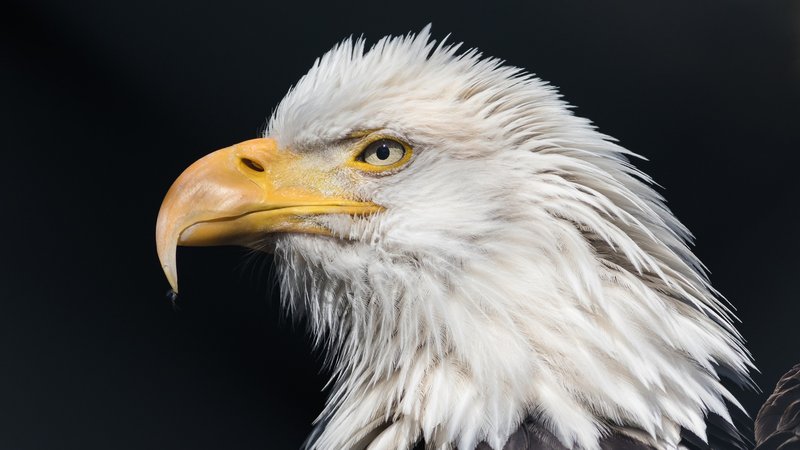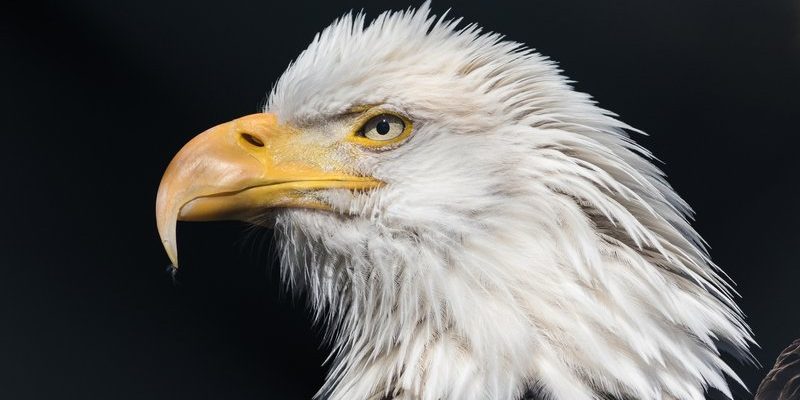
Honestly, eagles aren’t just impressive because of their size and strength; they also have some pretty unique behaviors and traits that set them apart in the bird world. Think of them as the superheroes of the avian community—powerful, skilled, and utterly captivating.
So, grab a cup of coffee, sit back, and let’s explore ten intriguing facts about eagles that will give you a deeper understanding of these magnificent birds.
1. Eagles Are Found on Every Continent Except Antarctica
You might be surprised to learn that eagles aren’t just a fixture in North America. These birds can be found on every continent except Antarctica. This means they adapt to a variety of habitats, from the mountains to wetlands and even deserts.
The golden eagle, for instance, thrives in the mountainous regions of North America, while the bald eagle often nests near large bodies of open water where fish are plentiful. Why do they need these diverse environments? Well, different species of eagles have unique diets and nesting habits that make certain habitats more suitable.
For example, the African Fish Eagle prefers freshwater habitats and is known for its distinctive, haunting call. Meanwhile, the Steppe Eagle roams the vast grasslands of Asia and Eastern Europe. Each species has adapted to its environment over thousands of years, showcasing the incredible versatility of this bird family.
2. Eagles Have Exceptional Vision
Have you ever wondered how eagles find their prey from such great heights? The secret lies in their astonishing eyesight. Eagles possess vision that is estimated to be four to eight times sharper than that of an average human.
This means they can spot a rabbit or fish from miles away! Let me explain how this works: eagles have a high density of photoreceptor cells in their eyes, which allows them to detect even the tiniest movements. They can also see in different wavelengths of light, including ultraviolet, which helps them spot prey that might be hiding.
Imagine sitting in a crowded café, and you can see your friend waving at you from a distance while everyone else is a blur. That’s what it’s like for an eagle when searching for food in the wild.
3. The Mating Rituals of Eagles Are Extraordinary
Eagles aren’t just fierce hunters; they’re also devoted partners. Their mating rituals can be quite a spectacle. During courtship, eagles perform elaborate aerial displays that involve soaring, diving, and even locking talons mid-air. This is often referred to as “aerial acrobatics.”
These displays aren’t just for show; they help strengthen pair bonds and establish territory. When eagles mate, they often return to the same nesting site year after year, making these locations incredibly important for their breeding success.
You might be wondering how long they stay together. Well, many eagle species are monogamous and mate for life. That’s a pretty romantic commitment in the animal kingdom!
4. Eagles Build Massive Nests
Eagles are known for constructing some of the largest nests of any bird. These nests can weigh over a ton and may be as deep as 13 feet! Imagine that; it’s like building a small house high up in the trees.
Eagles typically build their nests in tall trees or on cliffs, choosing locations that offer a good view of their surroundings. They use large sticks and branches, often layering softer materials like grass and feathers inside.
What’s even cooler is that eagles often reuse and add to their nests each year, making them bigger and sturdier. Over time, these nests can become quite the architectural marvel, showcasing the dedication these birds have to their young.
5. Eagles Are Highly Skilled Hunters
Let’s be honest: eagles are some of the best hunters around. They primarily hunt small to medium-sized animals, which can include fish, rabbits, and even other birds. How do they catch their prey? With incredible speed and precision.
When an eagle spots potential prey, it will dive at astonishing speeds, sometimes reaching up to 100 miles per hour. That’s faster than many cars on the highway! This swift descent is often called a “stoop.”
During the stoop, an eagle spreads its wings to create lift just before it strikes, using their strong talons to grab hold of their catch. It’s a breathtaking sight, showcasing both their power and agility.
6. The Diet of an Eagle Varies by Species
You might think all eagles eat fish, but their diets can vary widely. While the bald eagle is known for its love of fish, other species like the golden eagle prefer terrestrial prey such as rabbits and rodents.
Some eagles are opportunistic feeders, meaning they’ll take advantage of whatever food is available. The Harpy Eagle, for instance, preys on monkeys and sloths in the rainforest, showing just how adaptable these birds can be.
Understanding an eagle’s diet is crucial for conservation efforts. If their preferred prey becomes scarce, it can lead to challenges for their populations. It’s all part of the delicate balance of nature.
7. Eagles Have Unique Vocalizations
Eagles are not just silent predators; they also have their own unique vocalizations that are quite fascinating. However, you might be surprised to learn that their calls often sound less majestic than you might expect.
Bald eagles, for instance, produce a series of high-pitched whistling or piping sounds, which may not seem powerful but communicate their presence and intentions. Their calls are often used to maintain territory or attract a mate.
If you’ve ever heard an eagle’s call in a movie, it’s likely been dubbed with the sound of a hawk or another bird, making it sound more impressive. But the truth is, their actual calls can be quite subtle!
8. Eagles Are Symbols of Strength and Freedom
Throughout history, eagles have been used as symbols in various cultures around the world. In the United States, the bald eagle is a national symbol and represents freedom, strength, and resilience.
Many ancient cultures revered eagles for their majestic appearance and hunting prowess. The Romans used them as symbols of power and victory, while Native American tribes viewed them as spiritual messengers.
These iconic birds continue to inspire art, literature, and even flags. When you see an eagle, it’s hard not to feel a sense of awe, knowing the rich history and cultural significance they carry.
9. Conservation Efforts Have Made a Difference
Eagles faced significant threats throughout the 20th century, particularly from habitat destruction and pesticide use. However, dedicated conservation efforts have helped many species rebound. The bald eagle, once on the brink of extinction, has made a remarkable recovery thanks to legal protection and habitat restoration.
Organizations and individuals have worked tirelessly to protect nesting sites and educate the public about the importance of preserving these magnificent birds. Today, you can see bald eagles thriving in many parts of the United States, reminding us that conservation efforts matter.
Let me explain how you can help, too! Supporting local wildlife organizations or participating in clean-up efforts can contribute to ensuring that eagles and other wildlife continue to thrive.
10. Eagles Have Long Lifespans
Eagles are impressive not just in their abilities but also in their longevity. In the wild, eagles can live up to 20-30 years, depending on the species. Some of the oldest eagles in captivity have even exceeded 50 years!
Their long lifespans are partly due to their position at the top of the food chain, which helps them avoid many of the dangers faced by smaller animals. However, they still face challenges from environmental threats and human activities.
Understanding their lifespan helps us appreciate their life cycles and the challenges they face throughout their lives. It’s amazing to think about all the experiences an eagle has over its many years soaring through the skies!
In conclusion, eagles are truly remarkable creatures that deserve our admiration and respect. From their incredible hunting skills to their significant cultural symbolism, there’s so much to uncover. Understanding these facts can deepen our appreciation for these majestic birds. So, the next time you spot an eagle flying overhead, you’ll know a little more about what makes them so special!

